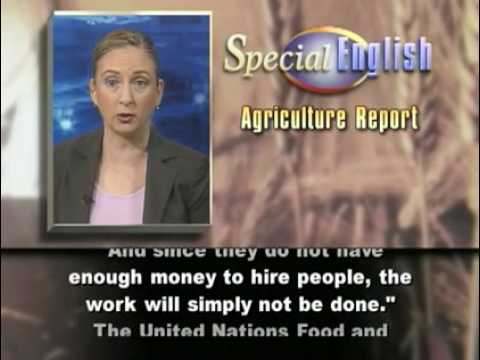In Haiti, a Struggle to Get Crops in the Ground
 |
This is the VOA Special
English Agriculture Report, from voaspecialenglish.com | facebook.com/voalearningenglish
Farmers in Haiti plant about
sixty percent of their crops in
the spring. But this spring is
a struggle with disaster.
The January twelfth earthquake flattened much of the capital and surrounding areas. It left more
than two hundred thousand people dead and about a million homeless.
International recovery plans
include helping Haiti expand food production. But now seasonal
rains do not make the situation
any easier. The rains continue through May and June.
Farmers in the quake area lost
tools as the shaking caused landslides that buried equipment. Also, many farmers need money for seeds and fertilizer. And Sabine Wilke of the aid group CARE says many lack the money to hire help
to prepare the land.
"For the planting, they also
need local labor," she says.
"And since they do not have
enough money to hire people, the work will simply not be done."
The United Nations Food and Agriculture Organization said
it has delivered tools and
seeds to thousands of families
in the quake area.
The earthquake was centered near Port-au-Prince. An estimated
six hundred thousand people left
for the countryside. Experts say
it will be difficult to feed them. Food prices are high, and many people fled the capital with only the clothes they were wearing.
Gerald Murray at the University
of Florida is an expert on Haiti.
He says many rural families have taken in relatives and friends
who lost homes and jobs.
"There may be enough to eat for
a while," he says, "but before
too long there may be hunger."
Farming is about sixty percent
of Haiti's economy. But most
food comes from imports.
Before the quake, the government
and private groups were working
to improve agriculture.
Deforestation is a major problem. There are few trees to protect
soil from floods, droughts
and severe storms.
In the sixteen hundreds Haitis French colonizers cleared forests
to plant sugar cane. In the nineteen fifties, forests were cut down
for wood and other products.
Poor technology and poor roads also reduced agricultural production.
So did animal and plant diseases. Farmers moved to cities.
Professor Murray says the average farm in Haiti is about one to one and a half hectares. Fields are commonly divided between level ground and a mountainside.
And that's the VOA Special
English Agriculture Report, available at
voaspecialenglish.com and
on Twitter and Facebook at
VOA Learning English.
(Adapted from a radio program broadcast 13Apr2010)
|




